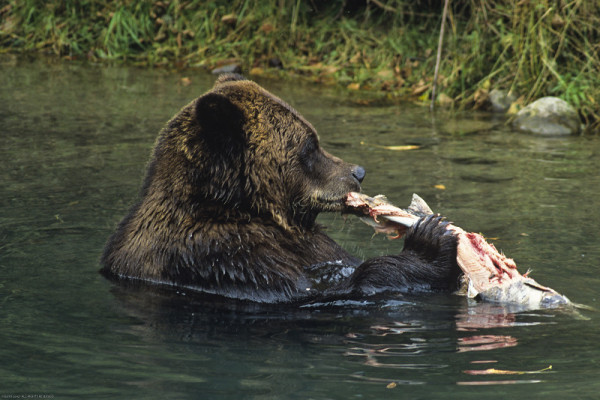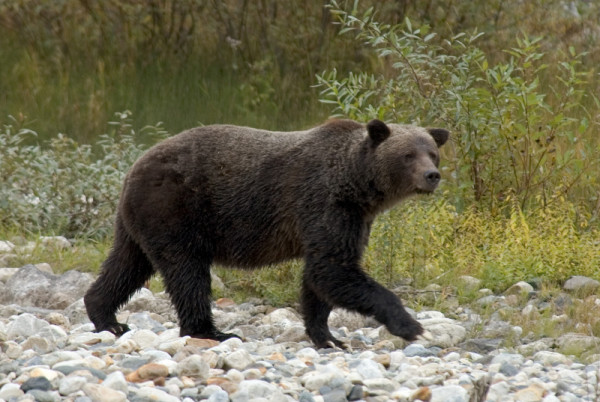Meet our Species of the Month: the grizzly bear!
Written By Joanna Barrington, Manager, Strategic Partnerships
This blog series on Canadian wildlife will explore key facts, threats and what WWF is doing to conserve these species. These Canadian species are also featured in the TELUS 2014 calendar. Check out the digital calendar and you can follow along with fun activities, download beautiful desktop wallpapers, colouring pages and more.
Large, powerful and sometimes deadly, the grizzly bear has fascinated man for centuries. Yet despite its formidable size and fearsome claws and teeth, its shaggy appearance and appealing features make it a favourite species with many people the world over.
It has traditionally been treated as a subspecies, Ursus arctos horribilis, of the brown bear living in North America. Its fur ranges from a cream or silver color to an almost black color, and is often tipped in a lighter color, giving it a grizzled look and hence its name! You can distinguish a grizzly from a black bear by the large muscular hump on its shoulder that provides exceptional digging ability and powerful striking force to its forepaws.
The grizzly bear calls the uplands of western North America home and has the widest distribution of any bear species. They are omnivores, with plants making up 80-90% of their diet, but eating everything including mammals, fish and berries, and so able to occupy a wide range of habitats, from the coast to dense forests, to sub alpine meadows and arctic tundra.
Did you know?
- Solitary creatures, grizzly bears are diurnal but become nocturnal when near human activity. They are not true hibernators: although they do sleep in dens during the winter months, they can be easily awakened.
- The average male weighs 550-770 lbs and the female 275-385 lbs..
- It’s the 2nd largest land carnivore in North America after the polar bear.
- The bears have a life span of 25-30 years in the wild.
Why is the grizzly at risk?
Although the grizzly bear has no natural enemies, it is classed as Threatened in the lower 48 states of the United States and of Special Concern in Canada. This is mainly due to poaching and loss of habitat. Also, with females averaging two cubs per pregnancy, population sizes are not rebounding as fast as they are dwindling.
What is WWF doing?
WWF is working to conserve bear populations and protect vital habitat for the bears. One of the actions we are taking to ensure that wide-ranging species such as the grizzly bear have the vast spaces they need to survive is through our work to conserve B.C. estuaries and northern rivers.
WWF-Canada and TELUS are partnering to support the conservation of Canadian wildlife and their habitats through a new $1 million, four-year partnership. Visit www.givewherewelive.ca to learn more.



